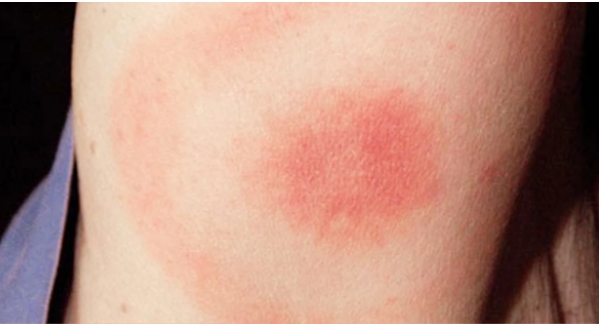Lyme disease is a type of disease that is very infectious and is typically caused by a bacteria known as Borrelia Burgdorfer. This bacteria is normally found in humans after they become infected on birds, deer, and mice and gets into them through a kind of tick.
In 1975, the first case of Lyme disease was detected in a place called Old Lyme, Connecticut. This is the most common tick-borne illness in either Europe or the States. This is just a fact; people who spend more time in wooded areas are more likely to get this form of the disease.
You will also be at a higher risk if you have a pet that goes to wooded areas frequently.
Symptoms
Different people will react differently to Lyme disease. There will also be a variance in the intensity of different people’s symptoms. Lyme disease is typically broken down into three different stages – early localized Lyme disease, early disseminated Lyme disease, and also late disseminated. However, it is important to note that the symptoms can often overlap. There is also the case that many people suffering from the condition only exhibit symptoms when they are at a later stage of the ailment.
We have listed the most common symptoms that are associated with Lyme disease:
- Fatigue
- Muscle aches
- Joint pain
- Joint swelling
- Headache
- Lymph nodes get swollen
- Fever
- Problems with sleeping
- Concentration issues
If you are experiencing any of these symptoms, get help from a medical professional immediately.
After the Occurrence of Lyme Disease
When you get treated for Lyme disease with some form of antibiotics but you still suffer from the symptoms, it is an indicator that you are suffering from post-Lyme disease syndrome. Roughly about 10 to 20 percent of the people affected by Lyme disease will suffer from these symptoms. The reason behind this occurrence is yet to be known.
When you get Post-Lyme disease syndrome, it will affect both your cognitive functioning and also your mobility. Most people will recover from this, but it will take time to recover, sometimes even years.
The symptoms of this stage of the disease are not that different from the earlier stages. It will primarily include the following symptoms:
- Problems with sleep
- Fatigue
- Muscles or joints that ache
- Swelling and/or pain within your larger joints. This includes knees, shoulders, or even elbows
- Problems with speech
Causes
Lyme disease can be the result of a particular bacterium known as Borrelia burgdorferi. These bacteria are normally spread to humans when they come into contact with deer ticks.
Diagnosis
When diagnosing Lyme disease, the first thing that will be taken into account will be your health history. This will include looking closely for tick bites.
Doctors will typically also perform physical exams in order to look for the commonly associated symptoms. In particular, they will be on the lookout for rashes.
Note that it will be unwise to get tested if you have just an early localized form of infection. In fact, blood tests are the most reliable when there are antibodies in your system. Doctors will typically make you go through some tests as well that will help them determine the best course of treatment for your particular condition.
Treatment
It is highly suggested that you get treatment for Lyme disease as soon as possible. If you are able to detect the condition at an earlier stage, just a simple 2-week oral antibiotic course will suffice. The medications that are normally prescribed for Lyme disease has been listed below:
- Amoxicillin, Doxycycline, or cefuroxime. These normally serve as the first line of treatment against Lyme disease in both children and adults.
- Some forms of Lyme disease will need you to take some Intravenous antibiotics. This is especially applicable for people who already have issues with their central nervous system or some form of cardiac issues.
Light Therapy
Light therapy, simply put, is a revolutionary form of treatment. It can help you deal with so many issues that it really can seem to be too good to be true. The fact of the matter is that light therapy has been clinically proven to work on a whole host of conditions, and one of them is Lyme disease.
People who are suffering from the lasting effects of this condition will find light therapy particular useful. They will need to only really pay attention to NIR bulb and how to expose the affected area to the light emitted by this bulb. Infrared heat has the potential to both warm the area and also penetrate the many layers of tissue, which can then dilate the blood vessels.
When there is better blood circulation within the body, toxins will be removed, and fresh oxygen will be able to enter the affected area. Other important nutrients will also be able to get into the affected area quickly. There are no shortage of studies that have all posited that improved blood circulation helps with both healing wounds and dealing with pain.
Final Words
Once your condition starts improving and you are near the end of your particular course of treatment, you will most likely be switched to some form of oral regimen. The entire course of treatment take about 14 to about 28 days.
Lyme disease can be distressful and can severely hamper the quality of life of those who have been affected. This is why early detection is so important. Once you are aware you have Lyme disease, you will be better equipped to mitigate the condition.








